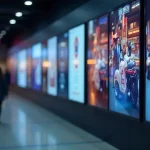For Ottawa business owners planning a commercial paint upgrade, understanding the timeline of a typical project can save you time, money, and unnecessary disruption. Whether you’re refreshing a downtown storefront, revitalizing a warehouse in the east end, or overhauling a multi-unit office space in Kanata, timing and coordination are everything.
A successful commercial painting project doesn’t start with a brushstroke—it begins with proper planning. From site assessments to final walkthroughs, each phase is critical in ensuring a seamless experience with minimal interference to your daily operations.
1. Site Assessment & Scope Definition (Week 1)
Before any tools or materials are brought onsite, a detailed site visit is essential. During this phase, your painting team evaluates square footage, surface types, height access, and repair requirements. This walkthrough helps define the full scope of the project and identifies potential obstacles early on, such as moisture issues, poor ventilation, or outdated coatings that may require special handling.
This stage also includes colour consultations if needed. While some clients come with brand guidelines, many rely on expert recommendations for selecting durable, visually appealing commercial-grade coatings suited for Ottawa’s variable climate.
2. Proposal, Budget & Scheduling (Week 2)
Once the assessment is complete, your contractor will draft a formal proposal that outlines materials, estimated labour hours, timelines, and costs. This is your opportunity to align budgets and timelines with business needs—especially if after-hours work or phased scheduling is required to avoid disrupting customers or staff.
Reputable commercial painting contractors in Ottawa typically offer flexible scheduling, especially for retail, hospitality, and healthcare businesses that need to remain operational throughout the project.
3. Permits, Prep Work & Surface Repairs (Week 3–4)
Not all projects require permits, but for exterior jobs in regulated zones or heritage buildings, the contractor may need to coordinate with municipal authorities or property managers. Once cleared, surface preparation begins.
Proper prep is often the longest and most underestimated phase of commercial painting. It includes power washing, sanding, scraping old finishes, caulking, priming, and repairing damaged drywall, wood, or masonry. High-quality preparation ensures better adhesion, smoother finishes, and long-term durability—critical in commercial environments subject to frequent wear and tear.
For large-scale projects, this phase may take a full week or more, depending on square footage and condition.
4. Material Mobilization & Safety Setup (Week 4)
Once prep is done, your contractor will mobilize materials, equipment, and crews. Scaffolding, lifts, drop cloths, and HEPA filtration systems (for dust control) are deployed, and safety protocols are implemented. In Ottawa, where weather can be unpredictable, having the right equipment to work around temperature shifts and humidity is crucial.
Additionally, any required signage for public safety or restricted access zones is posted. For businesses in multi-tenant buildings, notices may be shared with neighbouring units to inform them of the project’s scope and timeline.
5. Painting Execution (Week 5–6)
Now the visible transformation begins. Most commercial painting crews work in coordinated teams—one handling walls, another focusing on trims, ceilings, and difficult-to-reach areas. Application methods will vary depending on the surface and product used: brushes, rollers, airless sprayers, or electrostatic painting for metal surfaces.
This phase is often completed in stages—starting with primers and base coats, then progressing to top coats. Depending on drying time, curing requirements, and square footage, this process can take anywhere from a few days to several weeks.
Low-VOC and quick-drying commercial-grade paints help speed up turnover and reduce indoor air quality concerns, allowing staff to reoccupy spaces sooner.
6. Quality Control & Corrections (Week 6–7)
A reliable contractor won’t consider the project complete until a final inspection is done. This walkthrough should be scheduled with you (or your facilities manager) to identify any missed spots, uneven finishes, or touch-up areas.
During this stage, contractors verify sheen consistency, edge precision, and full coverage in all agreed areas. If issues are identified, the team schedules corrective work immediately—before removing equipment or scaffolding.
It’s also an opportunity to ask about paint maintenance, warranty coverage, and cleaning protocols for high-touch surfaces.
7. Cleanup, Disposal & Reoccupation (End of Week 7)
Once the painting is finished and approved, the crew begins final cleanup. This includes safely disposing of empty paint cans, removing all equipment and protective coverings, and wiping down surfaces.
Many businesses opt to reoccupy the space the following day or over a weekend to allow for final curing and air circulation. A responsible contractor will always leave the site broom-clean and ready for use.
8. Post-Project Support & Maintenance Planning (Week 8)
While your project may be “done,” good painting contractors go a step further by offering guidance on long-term upkeep. This might include a maintenance schedule (especially for exteriors), touch-up kits, and tips for cleaning without damaging coatings.
For Ottawa businesses that experience heavy foot traffic or seasonal grime (especially in winter), regular check-ins can extend the life of your investment. Consider asking about annual maintenance packages or discounted touch-up services as part of your commercial upkeep strategy.
Resources Worth Checking Out:
- National Research Council of Canada – Indoor Air Quality Guidelines
- Canadian Centre for Occupational Health and Safety – Workplace Hazardous Materials
- City of Ottawa – Building and Renovation Permits
A Fresh Look Without the Guesswork
A commercial painting project may seem disruptive at first glance, but with the right contractor and a clear timeline, it becomes a smooth, strategic upgrade to your business environment. Knowing what to expect—week by week—gives you the power to plan with confidence, communicate with staff, and ensure the final result aligns with your goals. Whether it’s about visual branding, tenant experience, or regulatory compliance, the right approach makes all the difference.







